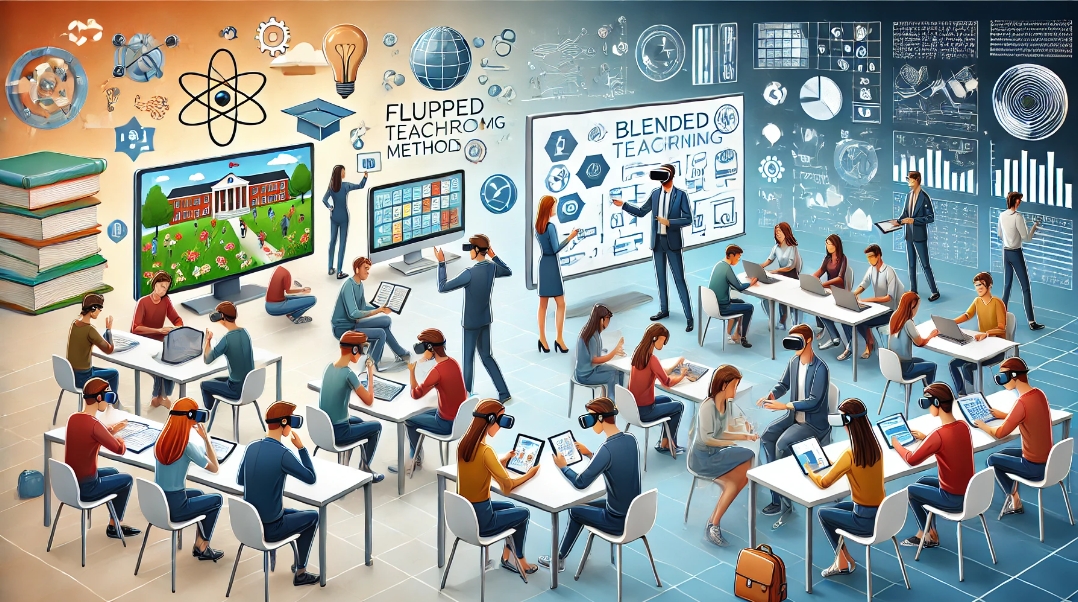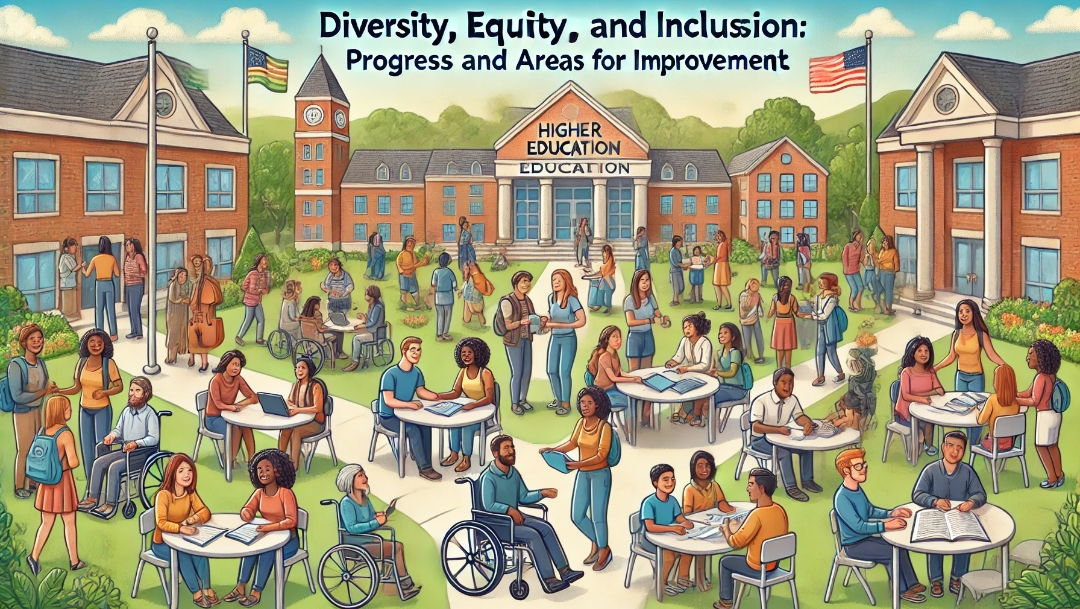Innovative Teaching Methods in Higher Education: Flipped Classrooms, and More

Higher education is undergoing a transformation as traditional lecture-based teaching methods are being reimagined to better engage students and enhance learning outcomes. Innovative teaching methods such as flipped classrooms, blended learning, active learning, and technology-enhanced instruction are reshaping the educational landscape, offering new ways for students to interact with content, instructors, and peers. These approaches emphasize student-centered learning, collaboration, and the use of technology to create more dynamic and personalized educational experiences. This article explores some of the most popular and effective innovative teaching methods in higher education, examining their benefits, challenges, and impact on student learning.
The Shift Toward Student-Centered Learning
Traditional higher education models have often relied on passive learning, where students listen to lectures, take notes, and are assessed through exams. However, research has shown that active, student-centered learning approaches are more effective in promoting deeper understanding, critical thinking, and knowledge retention. Innovative teaching methods shift the focus from the instructor to the student, encouraging active participation, problem-solving, and real-world application of knowledge.
By incorporating interactive elements, personalized learning paths, and collaborative activities, these methods cater to diverse learning styles and help students take ownership of their educational journeys. The following sections explore some of the most impactful student-centered teaching methods currently being used in higher education.
Key Innovative Teaching Methods
1. Flipped Classrooms
The flipped classroom model is a transformative approach that reverses the traditional learning environment. In a flipped classroom, students are introduced to new content outside of class, typically through videos, readings, or other digital resources. Class time is then dedicated to active learning activities such as discussions, problem-solving, group work, and hands-on projects that reinforce and apply the concepts learned independently.
This approach allows students to engage with the material at their own pace before coming to class, freeing up valuable in-person time for deeper exploration and interaction. The flipped model encourages students to take an active role in their learning, promotes collaboration, and provides instructors with opportunities to offer personalized support and feedback.
For example, in a flipped biology class, students might watch a lecture video on cell biology at home and then spend class time conducting experiments, analyzing data, or working through case studies. This hands-on, interactive approach helps students develop a deeper understanding of the material and improves their ability to apply knowledge in practical contexts.
2. Blended Learning
Blended learning, also known as hybrid learning, combines traditional face-to-face instruction with online components, creating a flexible learning environment that integrates the best of both worlds. This method allows students to access digital resources, participate in online discussions, and complete assignments at their convenience, while still benefiting from in-person interactions with instructors and peers.
Blended learning offers several advantages, including increased flexibility, the ability to personalize learning, and enhanced access to diverse resources. It accommodates different learning preferences and allows students to review content as needed, providing a more tailored educational experience. Instructors can use data from online activities to identify areas where students are struggling and adjust their teaching strategies accordingly.
For instance, a blended learning approach in a literature course might involve students reading texts and participating in online discussion boards before coming to class, where they engage in group analysis and presentations. This combination of independent and collaborative learning helps students develop critical thinking skills and engage with the material in multiple ways.
3. Active Learning
Active learning is a teaching approach that involves engaging students directly in the learning process through activities such as group discussions, problem-solving exercises, peer teaching, and hands-on projects. Rather than passively receiving information, students actively participate, reflect, and collaborate to construct their own understanding of the material.
Research has shown that active learning improves student engagement, retention, and academic performance, particularly in STEM fields. Techniques such as think-pair-share, concept mapping, and interactive simulations help students connect theory to practice and develop a deeper understanding of complex concepts.
One popular active learning strategy is the use of case-based learning, where students analyze real-world scenarios and work together to propose solutions. This method encourages critical thinking, teamwork, and the application of theoretical knowledge to practical challenges, making learning more relevant and impactful.
4. Gamification and Game-Based Learning
Gamification involves incorporating game elements into the learning process to motivate students, enhance engagement, and make learning more enjoyable. This can include using point systems, leaderboards, badges, and challenges to create a sense of competition and achievement. Game-based learning takes this concept further by using actual games or simulations as educational tools, allowing students to learn through play and experimentation.
These approaches are particularly effective in promoting active participation, as they tap into students’ intrinsic motivation and encourage them to take risks and explore new strategies. For example, a business class might use a simulation game where students manage a virtual company, making decisions about marketing, production, and finance to achieve success. Such experiences provide valuable insights into real-world applications and foster skills such as decision-making, strategic thinking, and collaboration.
5. Technology-Enhanced Learning (TEL)
Technology-Enhanced Learning (TEL) encompasses a wide range of digital tools and platforms that support and enhance the educational experience. From virtual labs and simulations to interactive whiteboards and online quizzes, TEL provides dynamic and immersive learning environments that cater to different learning styles.
One notable example of TEL is the use of virtual reality (VR) and augmented reality (AR) to create realistic simulations that allow students to practice skills in a controlled environment. Medical students, for instance, can use VR to simulate surgeries, while engineering students can explore virtual models of complex machinery. These technologies provide hands-on learning experiences that are difficult to replicate in traditional classrooms, making education more accessible and engaging.
Additionally, AI-powered adaptive learning platforms offer personalized learning paths, adjusting the difficulty of tasks and providing targeted feedback based on individual performance. These tools help students learn at their own pace, reinforcing concepts they struggle with and advancing when they demonstrate mastery.
6. Collaborative Learning
Collaborative learning emphasizes group work and peer-to-peer interactions, fostering a sense of community and shared responsibility for learning. Students work together on projects, solve problems as a team, and learn from each other’s perspectives. This approach encourages communication, negotiation, and the ability to work effectively with others—skills that are essential in both academic and professional settings.
Collaborative learning can take many forms, including group discussions, peer review activities, and team-based problem-solving. For example, in a design course, students might work together to create a prototype, incorporating feedback from peers and iterating on their designs. This process helps students develop a deeper understanding of the subject matter and enhances their collaborative skills.
Challenges and Considerations
1. Adapting to New Teaching Methods
While innovative teaching methods offer numerous benefits, they also require a shift in mindset for both instructors and students. Faculty members may need training and support to effectively implement these approaches, and students accustomed to traditional lectures may need time to adjust to more active and participatory learning environments.
Universities must invest in professional development for instructors, providing resources, workshops, and communities of practice that foster the adoption of innovative teaching strategies. Additionally, clear communication with students about the benefits of these methods can help ease the transition and encourage active engagement.
2. Ensuring Accessibility and Equity
As technology becomes more integrated into teaching, ensuring that all students have equal access to digital tools and resources is essential. Not all students have the same access to technology, and universities must address issues related to the digital divide, including providing devices, internet access, and technical support to those who need it.
Additionally, instructional design should consider diverse learning needs, ensuring that content is accessible to students with disabilities and those who may require accommodations. Inclusive teaching practices, such as providing transcripts for videos, using accessible software, and offering multiple ways to engage with the material, are key to promoting equity in innovative learning environments.
3. Balancing Technology with Human Interaction
While technology offers powerful tools for enhancing learning, it is important to strike a balance between digital and human interaction. Face-to-face communication, mentorship, and personal connections remain vital components of the educational experience. Innovative teaching methods should be used to complement, rather than replace, the valuable interactions between students and instructors.
Maintaining a focus on building relationships, fostering a supportive classroom environment, and encouraging open dialogue can help ensure that technology enhances rather than detracts from the human aspects of learning.
Conclusion
Innovative teaching methods such as flipped classrooms, blended learning, active learning, and technology-enhanced instruction are reshaping higher education, offering more engaging, flexible, and personalized learning experiences. These approaches shift the focus from passive to active learning, empowering students to take charge of their education and develop skills that are essential for success in the modern world.
As universities continue to explore and implement these innovative methods, they must also address challenges related to adaptation, accessibility, and the balance between technology and human interaction. By embracing these new teaching strategies, higher education can create more dynamic, inclusive, and effective learning environments that prepare students for the complexities of the 21st-century landscape.




